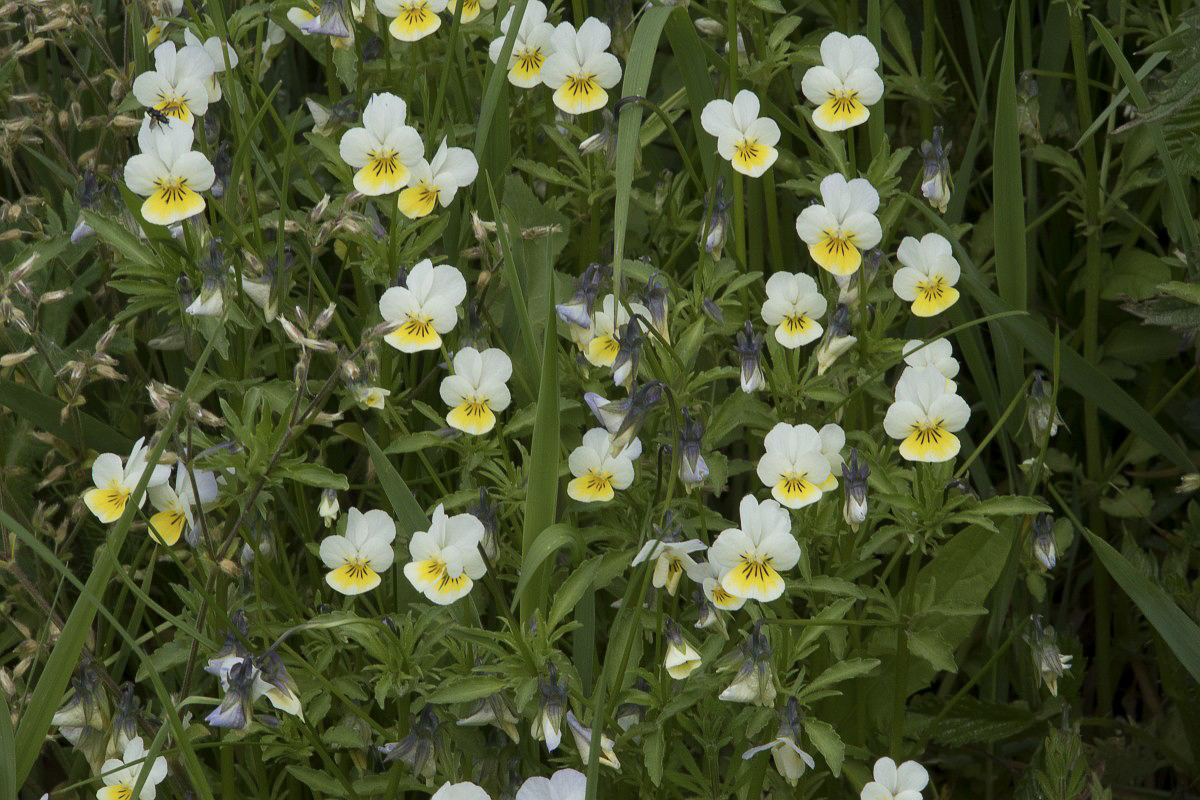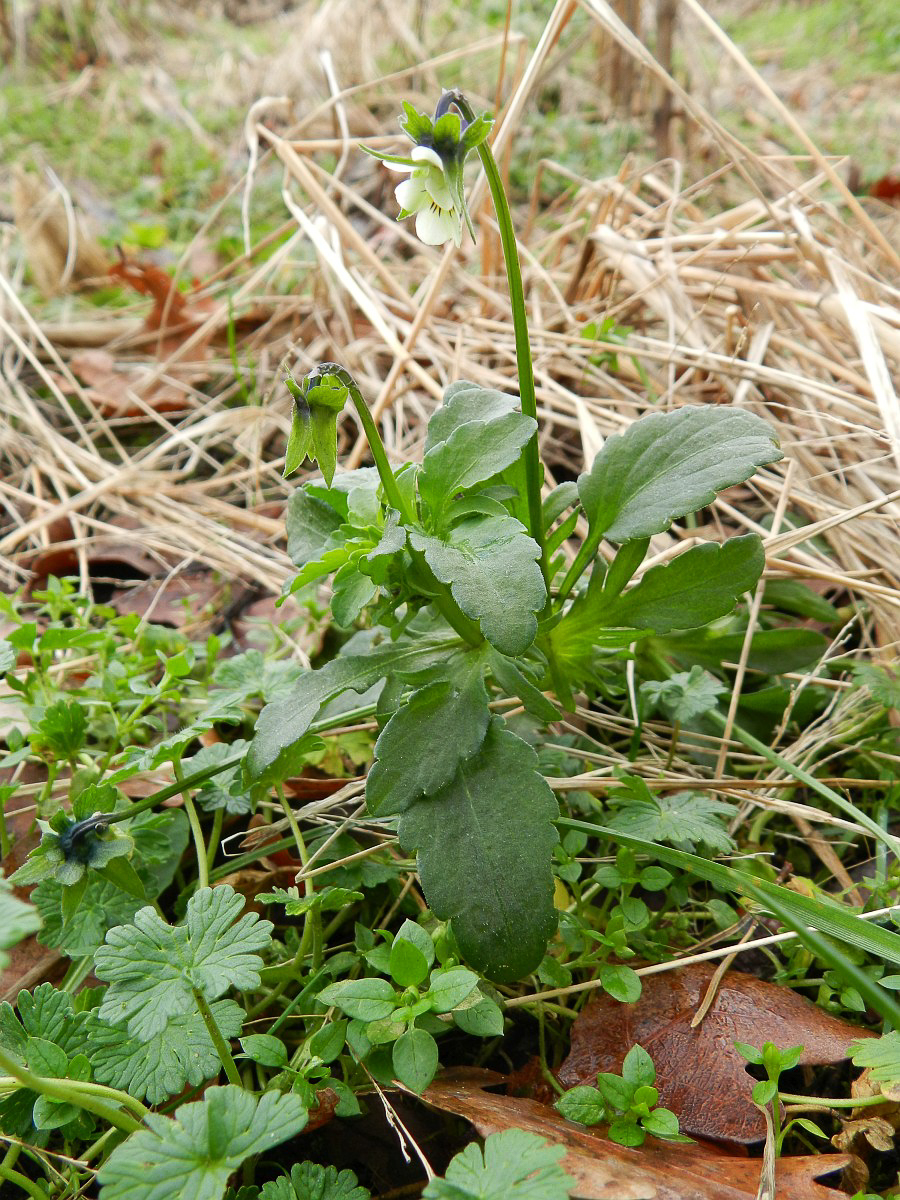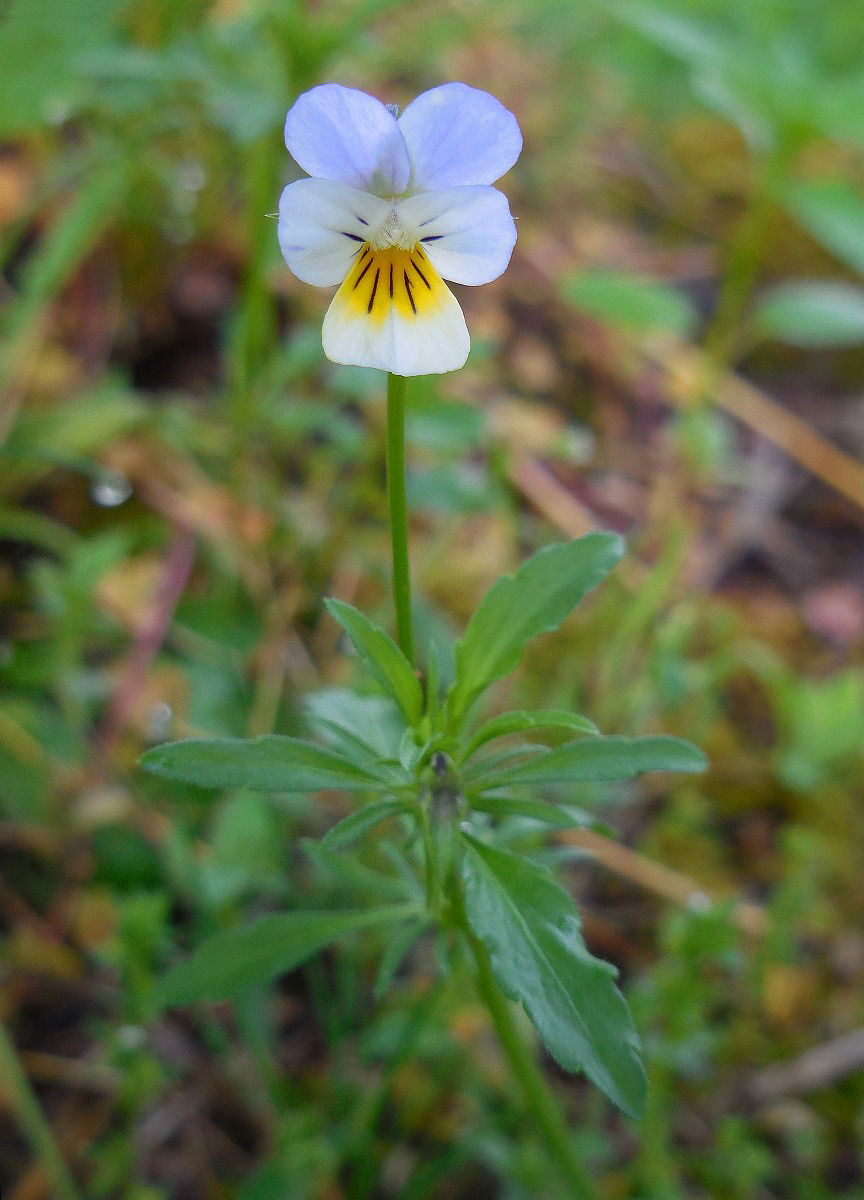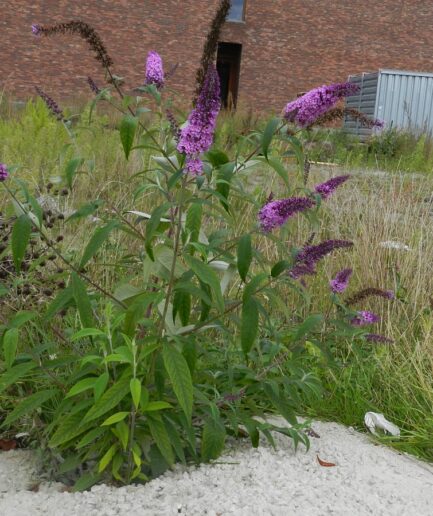Field pansy
Scientific name: Viola arvensis Murray
Family name: Violaceae
MORPHOLOGY
Habit and dimensions: annual herbaceous plant, reaching heights between 10 and 30 centimeters.
Stem: ascending or erect, leafy, and often branched. May have scattered hairiness.
Leaves: petiolate, with crenulate margins, characterized by very small rounded and convex teeth. They are lanceolate or ovate in shape.
Flowers: carried on long axillary peduncles and equipped with small bracts at the top. They are zygomorphic, hermaphroditic, and pentamerous, with five petals and five sepals. The lower petals are yellow, while the upper ones range from yellow to bluish, to violet.
Fruits and seeds: capsule formed by three valves that split open to release very small brown seeds.
DISTRIBUTION AND HABITAT
Eurasian species found throughout the Italian peninsula. It is found in fields, meadows, and fallow lands. It thrives on well-drained and moist soils, from sea level up to about 1,400 meters altitude.
USE
No known use.
INTERESTING FACTS
The specific epithet comes from Latin “arvum” (= field, arable soil) and refers to the growing environment of this plant.
The seeds are equipped with a small appendage, called an elaiosome, rich in fatty substances that ants are fond of. Ants collect the seeds and carry them to their underground nests, later abandoning them already prepared to germinate for the new season.
Photo: Under the free license of Saxifraga – Willem van Krujisbergen, Ed Stikvoort, and Rutger Barendse



















